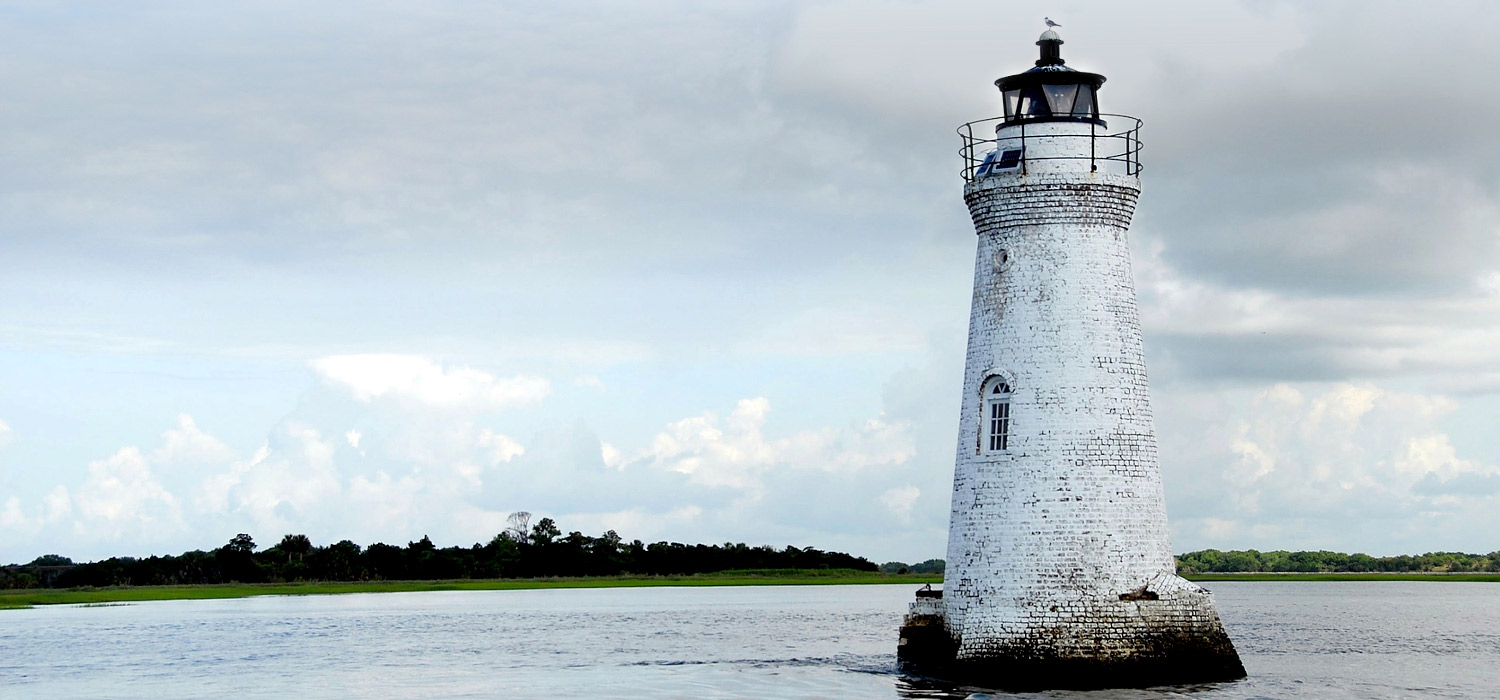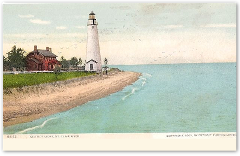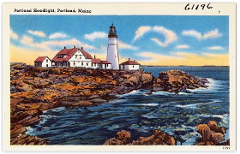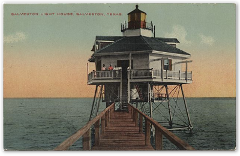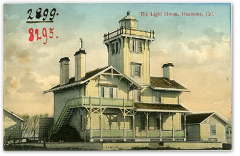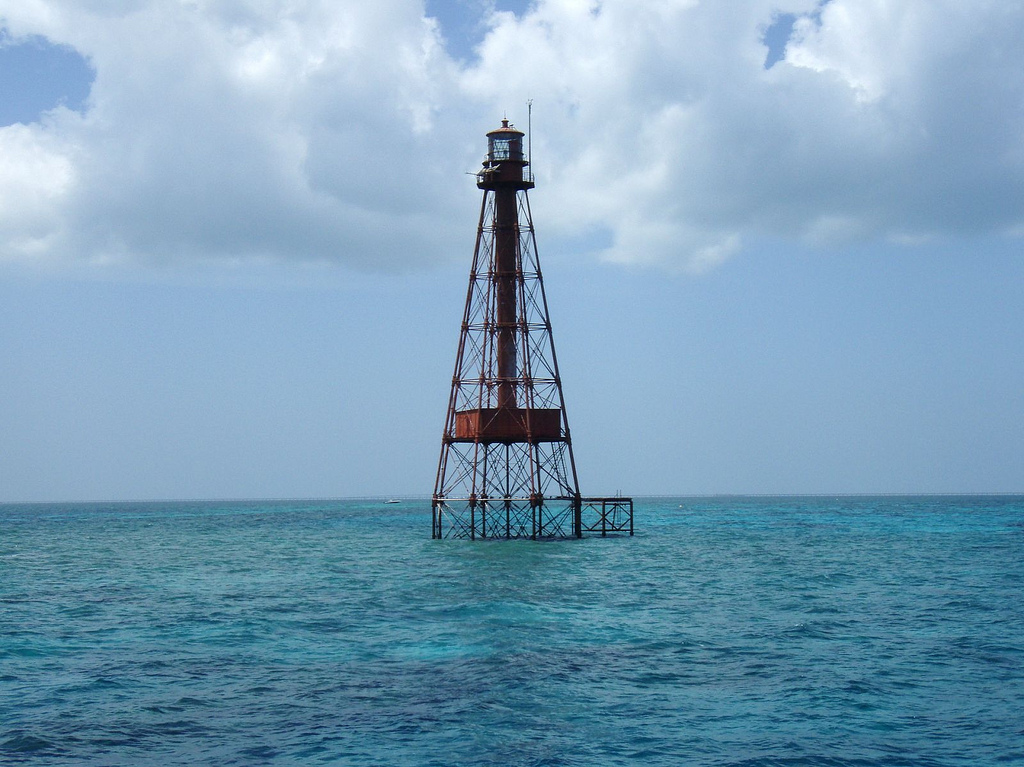![]()
![]()
![]() Some rights reserved - By NOAA Photo Library
Some rights reserved - By NOAA Photo Library
Sombrero Key Light is located near Key Vaca in Marathon, Florida. The lighthouse is located on a mostly submerged reef. The name Sombrero Key goes back to the Spanish, and old charts show a small island at the spot, but by the later 19th Century the island had eroded away, with some parts of the reef exposed at low tide. As a result, the reef and the lighthouse have also been called Dry Banks.
The lighthouse was put in service in 1858, automated in 1960, and is still in operation. The foundation is iron pilings with disks, and the tower is a skeletal octagonal pyramid of cast iron. It is a 142-foot (43 m) tall brown painted tower. It has two platforms. The lower one, 15 feet (4.6 m) above the water, held water and fuel tanks, the generator (after the light was electrified), boat hoists and a workshop. The upper platform, 40 feet (12 m) above the water, held the quarters for the staff. The original lens, a first-order Fresnel lens, is now on display in the Key West Lighthouse Museum. The Sombrero Key Light is the tallest lighthouse in the Florida Keys, and was the last lighthouse constructed under the supervision of Lieutenant George Meade of the Bureau of Topographical Engineers.
Location: Near Marathon Key; 24° 37' 6" N x 81° 06' 6" W
Station Established: 1858
Year Current Tower(s) First Lit: 1858
Operational? YES
Automated? YES, 1960
Deactivated: n/a
Height: 166 ft.; 142' above water
Foundation Materials: IRON PILE W/DISCS
Construction Materials: CAST IRON
Tower Shape: SKELETAL OCTAGONAL PYRAMIDAL
Markings/Pattern: BROWN
Relationship to Other Structure: INTEGRAL
Original Lens: FIRST ORDER, FRESNEL 1858
Historical Information:
- Sombrero Key Light is in eight feet of water on an outer line of reefs. It had a group flashing white 45,000 candlepower and 3 red 13,000 candlepower sector lights. It stands 142 feet above water and is visible for 18 miles (as of 1968).
- The 12-inch wrought-iron foundation-piles rest centrally on cast-iron disks 8 feet in diameter, and go 10 feet into the rock. They stand at the angles and center of an octagon 56 feet across and are braced by horizontal radial and periphery ties of 5-inch round iron. The frame rises from this foundation pyramidal in shape, in six sections, with a diameter of 56 feet at the bottom, tapering to 15 feet at the top. All the shafts, except those of the lower series, are of hollow cast-iron.
- The keeper's dwelling, in the second section, is 30 feet square, and of boiler-iron lined with wood. A circular stairway ascended to the lantern, in a cylinder of boiler iron lined with wood.
- The light was built under the direction of Lieutenant George G. Meade, AUS, at a cost of $153,159.41.
It was first lit on 17 March 1858.
Keepers:
- Joseph Bethel 1858 – 1859
- Joseph F. Papy 1859 – 1860
- Anthony Davis 1860 – 1862
- James Bryson 1862 – 1864
- John H. Singleton 1864 – 1866
- John Carroll 1866 – 1870
- Peter Crocker 1870 – 1872
- Adolphus A. Seymour 1872 – 1873
- Jeremiah Buckley 1873 – 1881
- Thomas J. Pinder 1881 – 1884
- Melville Evans Spencer 1884 – 1889
- Rudolph Rieke 1889 – 1904
- John Watkins 1904 – 1913
- Miguel Fabal 1913 – 1919
- William H. Pierce 1919 – at least 1933
- Edward P. Johnson 1936 – 1941
- Furman C. Williamson 1958 –1960
Credits
Content provided by www.uscg.mil and wikipedia.org

